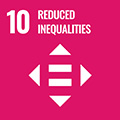- Docente: Pierpaolo Ascari
- Credits: 4
- SSD: M-FIL/04
- Language: Italian
- Moduli: Pierpaolo Ascari (Modulo 1) Pierpaolo Ascari (Modulo 2)
- Teaching Mode: Traditional lectures (Modulo 1) Traditional lectures (Modulo 2)
- Campus: Cesena
- Corso: Single cycle degree programme (LMCU) in Architecture (cod. 9265)
-
from Feb 27, 2025 to Mar 27, 2025
-
from Apr 03, 2025 to May 29, 2025
Learning outcomes
Comprehension and discussion of some key questions of contemporary aesthetic debate on architecture, its language and link to the subject “city”, through a reconstructive and analytical approach.
Course contents
The course of Aesthetics (C.I. 4 CFU, 40 hours) consists of the characterizing Module 1 (2 CFU, 20 hours) and of the Module 2 - exercises (2 CFU, 20 hours).
The course will focus on the analysis of the relationships that architecture (with particular reference to the Bauhaus) has with war, social conflict, artistic and literary production, cinema, theater and philosophical reflection.
Readings/Bibliography
The course is divided into six sections, which will correspond to six working groups. The way in which the work of the six groups will translate into the exam bibliography will be illustrated in the classroom. The sections are as follows:
1) Walter Gropius, La nuova architettura e il Bauhaus, trad. di Alessandra Salvini, Abscondita, Milano 2004; Andrea Mariotti, Cultura marxista e movimento moderno, in Id., Gramsci e l'architettura e altri scritti, Dedalo, Bari 1978, Tomás Maldonado, Bauhaus, a cura di Raimonda Riccini, Feltrinelli, Milano 2019 (le pagine verranno indicate a lezione).
2) Bertolt Brecht, Tamburi nella notte, in Id., Teatro, a cura di Emilio Castellani, Einaudi, Torino 1973, pp. 69-125; Furio Jesi, Spartakus. Simbologia della rivolta, a cura di Andrea Cavalletti, Bollati Boringhieri, Torino 2022, pp. 55-70.
3) Bertolt Brecht, Nuova tecnica dell'arte drammatica, in Id., Scritti teatrali, trad. di Emilio Castellani, Einaudi, Torino 1962, pp. 96-102; Erwin Piscator, Il teatro politico, trad. di Alberto Spaini, Meltemi, Milano 2022, pp. 41-68, 177-205.
4) Günther Anders, Uomo senza mondo. Scritti sull'arte e la letteratura, trad. di András Aranyossy e Pier Paolo Portinaro, Spazio Libri Editori, Ferrara 1991, pp. 157-174, 187-235.
5) Ernst Bloch, Eredità di questo tempo, trad. di Laura Boella, Mimesis, Milano 2015, pp. 145-212.
6) Siegfried Kracauer, Da Caligari a Hitler. Una storia psicologica del cinema tedesco, a cura di Leonardo Quaresima, Lindau, Torino 2001, pp. 49-58, 91-146, 185-191, 223-247, 263-312.
For the purposes of the exam, students will also be required to read one of the following novels: Christopher Isherwood, Addio a Berlino, trad. di Laura Noulian, Adelphi, Milano 2013; Alfred Döblin, Berlin Alexanderplatz, trad. di Alberto Spaini, Rizzoli, Milano 2008; Franz Hessel, Berlino segreta, trad. di Eva Banchelli, Elliot, Roma 2013; Hans Fallada, E adesso, pover'uomo?, trad. di Mario Rubino, Sellerio, Palermo 2008; Erich Maria Remarque, Niente di nuovo sul fronte occidentale, trad. di Stefano Jacini, Neri Pozza, Vicenza 2016; Joseph Roth, Destra e sinistra, trad. di Elisabetta Dell'Anna Ciancia, Adelphi, Milano 1991; Irmgard Keun, Doris, la ragazza misto seta, trad. di Vins Gallico, L'Orma, Roma 2017; Ivan Goll, Sodoma e Berlino, trad. di Ettore Capriolo, Il Formichiere, Milano 1975.
Teaching methods
The course comprises 40 hours of lessons (the first and the second part: 20 hours each)
Assessment methods
The course of Aesthetics (C.I. 4 CFU, 40 hours) consists, as well as of the characterizing Module 1 (2 CFU, 20 hours), of the Module 2 - exercises (2 CFU, 20 hours).
The examination of the course on Aesthetics includes the verification of the learning of the contents of all the modules that make up the course and takes place in a single exam.
Oral examination. Short texts written or discussed by students are welcome.
A very thorough knowledge of the topics covered in the course, together with high critical analysis and linking skills and a secure command of the specific terminology will be assessed with maximum marks (30-30L).A thorough knowledge of the topics covered in the course, together with good analytical and critical skills and a secure command of the specific terminology will be assessed with good marks (27-29).
A technically adequate preparation and sufficient analytical capacity, even if not particularly articulate, expressed in correct language, will produce fair marks (23-26).
Sufficient preparation and ability to analyse, expressed in barely formally correct language, will result in a pass (18-22).
Teaching tools
The bibliographies specific to the different parts of the course will be analyzed and acquired during the various lessons, starting with the tools available in the texts indicated in the program. The teaching material presented during the lessons is made available to the student in paper or electronic format via the internet, also following the access restrictions, according to the modalities that will be indicated at the beginning of the course.
Office hours
See the website of Pierpaolo Ascari
SDGs


This teaching activity contributes to the achievement of the Sustainable Development Goals of the UN 2030 Agenda.
